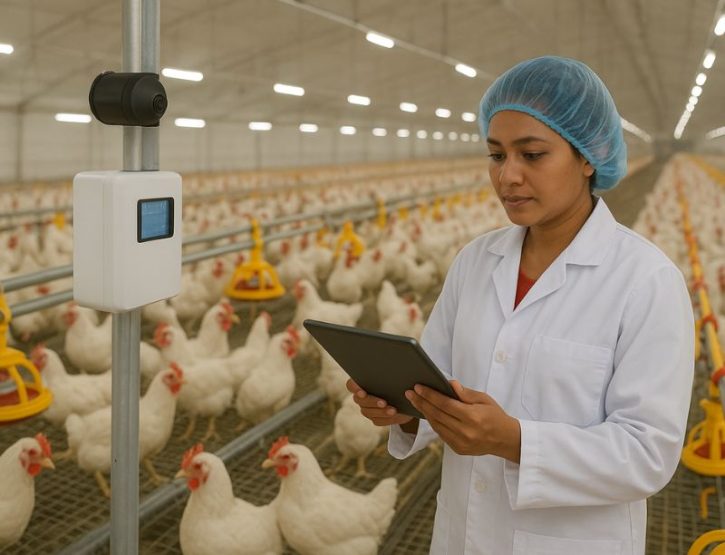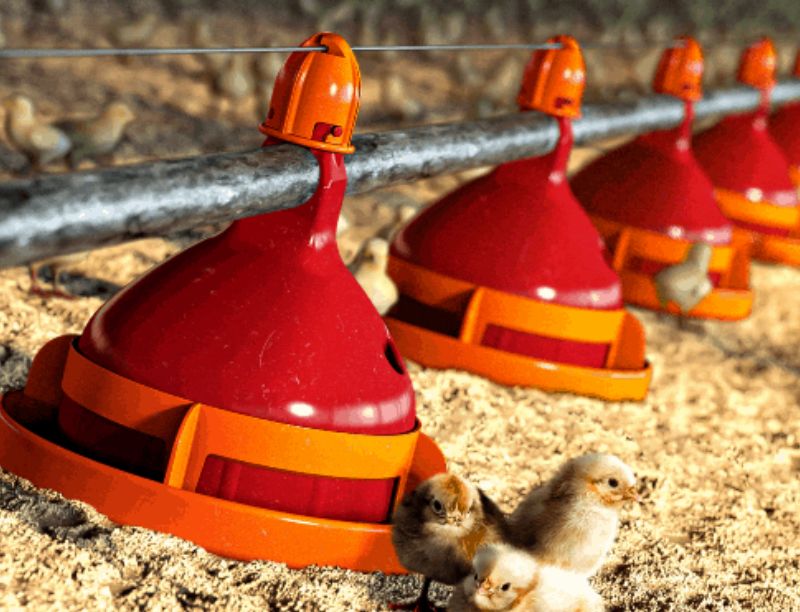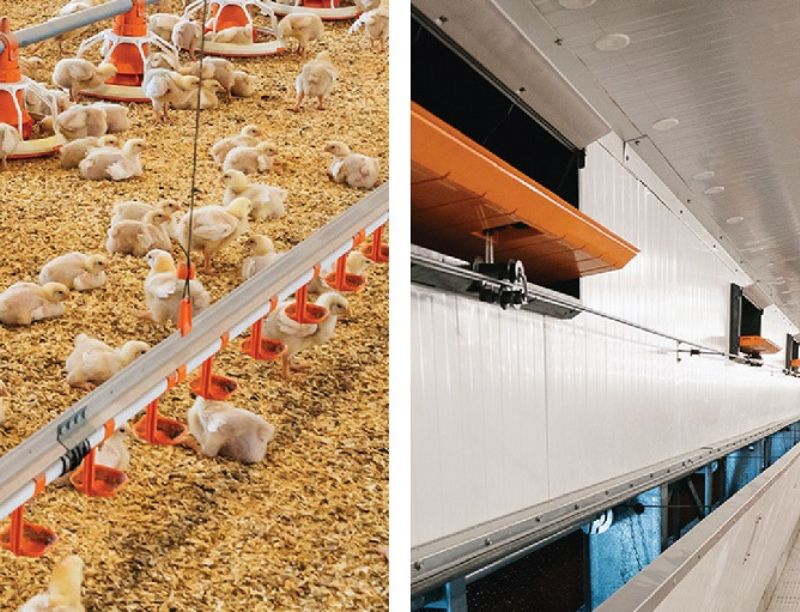
Modern Poultry Technology in Nepal: The Future of Poultry Farming
The poultry industry in Nepal has emerged as one of the fastest-growing sectors, accounting for a considerable component of the country’s agricultural GDP and contributing to food security. Over the last two decades, poultry farming has undergone a transformation from backyard raising to modern, technology-based enterprises.
Advanced technologies have been introduced to the Nepalese poultry industry, revolutionizing it through enhancements in various aspects of farmers’ productivity, efficiency, and profitability.
This paper explores modern poultry technology in Nepal—its history, benefits, challenges, and future prospects.
Emergence of Modern Poultry Technology in Nepal
Today, poultry farms in Chitwan, Kathmandu, Pokhara, and Biratnagar have adopted state-of-the-art technologies, including automated feeding systems, temperature-controlled housing facilities, vaccination, and precision farming tools. This has ensured high levels of productivity at low operational costs.
Key Components of Modern Poultry Technology in Nepal
Various aspects of poultry farming are conducted with the aid of modern technologies. Some of the critical technologies that are advancing in Nepalese poultry farming are mentioned below:
Automation of Poultry Housing Systems
Modern poultry farms in Nepal maintain automated housing systems that can provide an ideal living condition to birds. With:
- Temperature and humidity control: The computerized climate control systems maintain environmental conditions at optimal levels, reducing stress and improving growth rates.
- The ventilation systems ensure good aeration, thereby decreasing the incidence of respiratory diseases.
- Lighting control: These programmable lighting controls can lay cycles and behavior in birds.
These systems are popular in the Terai and mid-hill areas, as changes in climatic conditions can impact the health and performance of poultry.
Automatic Feeding and Drinking Systems
Conventional methods of manual feeding proved to be very time-consuming and inconsistent. By applying automated feeding systems, poultry farmers can:
- Provide balanced and timely feed.
- Reduce feed wastage.
- Keep the increase balanced among the birds.
The automated nipple drinkers ensure cleanliness and a continuous water supply, which is crucial in maintaining good health

Automatic Feeding and Drinking Systems(Source: veterinariadigital)
of the flock and thereby enhancing production efficiency.
Advanced Breeding and Hatchery Technology
Artificial incubation and hatchery automation systems have brought several changes in the breeding context of Nepal. Presently, modern hatcheries use:
- Digital temperature and humidity controllers.
- Automatic egg turning devices
- Biosecurity-enhanced incubation units
These technologies ensure higher hatchability and consistent quality in chicks. Major hatcheries of Chitwan and Rupandehi have already introduced such systems and set benchmarks for others.
Precision feeding and nutritional management
About 60–70% of the expenses associated with raising chickens are related to feed. Modern technology enables today’s farmers to utilize precision feeding systems that allow for the precise balancing of nutrient intake based on the age, weight, and purpose of the bird, whether it is a broiler or layer.
Nutritionists utilize software-based feed formulation tools to design diets that optimize performance at the lowest cost.
Additionally, feed additives, probiotics, and enzyme technology enhance feed efficiency and the immunity of birds, thereby decreasing their reliance on antibiotics.
Technology for Disease Diagnosis and Vaccination
Diseases pose significant threats to poultry farming in Nepal, and experts have implemented advanced technology for disease control, including rapid diagnostic kits and digital monitoring systems.
Furthermore, vaccinations against diseases such as Newcastle disease and avian influenza are now administered using automated machines, along with cold-chain systems, making vaccinations both timely and highly efficient.
It will involve collaboration between the National Poultry Research Centre and private veterinary firms to advance innovative vaccination strategies with real-time monitoring systems.
Waste management and biosecurity systems
Modern poultry farms have adopted ecologically friendly waste management technologies. They include:
- Biogas production from poultry litter.
- Organic composting for agricultural use.
- Closed-system manure drying machines
Other improved biosecurity technologies to help prevent spread within farms include footbaths, air filtration, and disinfection tunnels.
Data-Driven Farm Management
The significant aspects of recent modernization in poultry technology include digitalization. These days, farmers in Nepal use mobile apps and smart sensors integrated with cloud-based software to monitor and manage the performance of their flocks.
These tools provide real-time data on temperature, humidity, feed intake, and mortality rates, enabling farmers to make informed decisions about their operations.
Some modern farms have also initiated IoT- and AI-based systems for predictive analytics, which can detect any risk of disease or performance deviations at their earliest stage.
Impact of Modern Poultry Technology in Nepal
The adoption of modern technology has brought numerous transformative benefits to Nepali poultry. Some of the significant impacts are identified below:
- Increased productivity: New automation and improved management methods have enhanced egg production rates and meat yields. Birds reach market weight more quickly and experience lower mortality rates, which contributes to the farmer’s profitability.
- Improved Quality and Consistency: These technological interventions ensure consistency in feeding, uniformity in temperature, and efficiency in disease management, thereby guaranteeing better quality eggs and meats that meet consumers’ expectations.
- Reducing Labour and Operational Costs: This reduces manual labor and eliminates much human error, thereby reducing inefficiency in operations. Large-scale farming is more manageable and also cost-effective.
- Improved biosecurity and disease prevention: Hence, the modern health monitoring system and vaccination programs have led to a sharp reduction in sickness outbreaks, thereby safeguarding both animal and human health.
- Environmental Sustainability: Poultry farming can become more sustainable and contribute significantly to Nepal’s green development goals by adopting renewable energy systems, such as solar-powered poultry houses, and ecologically friendly methods of waste management.

Modern Poultry Technology(Source: bigdutchman)
Challenges in the adoption of modern poultry technology in Nepal
Despite such growing success, there are many obstacles to the widespread adoption of contemporary poultry technology in Nepal:
- High Initial Investment: Most modern poultry equipment and automation systems are highly capital-intensive, and therefore potentially out of reach for many small-scale farmers.
- Lack of Technical Knowledge: The poor training on operating and maintaining advanced systems among many farmers has often led to underutilization or damage to the equipment.
- Limited access to finance: While credit facilities are available, farmers are unable to invest in modernization due to bureaucratic hurdles and stringent collateral requirements.
- Inadequate Infrastructure: The absence of electricity, improper road connectivity, and a shortage of spare parts may hinder the modern operation of poultry farms.
- Biosecurity Awareness: Modern systems enhance biosecurity, yet a lack of awareness and compliance among smallholders remains a significant concern.
To achieve truly sustainable growth, it is essential to address these challenges through education, subsidies, and technical support.
Future Prospects of Modern Poultry Technology in Nepal
As technology is rapidly being adopted, the future of the poultry industry in Nepal appears promising. A few of the trends that will affect its growth are discussed below.
- Smart farming with IoT Integration: Smart sensors and other IoT devices will control temperature, humidity, and feeding systems. Predictive analytics can also be applied to enable farmers to predict production trends and manage risks more effectively.
- Artificial Intelligence and Automation: With AI at the forefront, such monitoring systems can help identify illnesses early, behavioral changes, and nutritional deficiencies.
- Poultry farming: eco-friendly and green: The farms of the future can be at once greener and more lucrative with the advent of solar-powered farms, biodegradable packaging, and waste-to-energy projects.
- Genetic Improvement and Selective Breeding: Modern genetics will enhance disease resistance and productivity of local breeds, thereby decreasing dependence on imported chicks.
- Expanding cold-chain and processing facilities: Strengthening the poultry value chain through investment in cold storage, transportation, and processing units will ensure the food safety and export potential of such commodities.
Conclusion
Indeed, the adoption of modern poultry technology marks the onset of a revolutionary era for agricultural development in Nepal. It changed the task from a traditional occupation to a technically advanced, economically viable, and sustainable one.
Nepali farmers have achieved world standards in poultry production through the use of modern equipment, automated systems, data-driven management, and superior biosecurity measures.
The poultry industry is a frontline among modern agricultural sectors in Nepal, offering enormous opportunities for innovation, entrepreneurship, and rural prosperity.
With proper policy support, access to finance, and continued training, the adoption of modern poultry technology will not only improve Nepal’s food security situation but also make the country more competitive in the regional poultry market.
Read More: What are the Various Records Taken in a Poultry Farm
